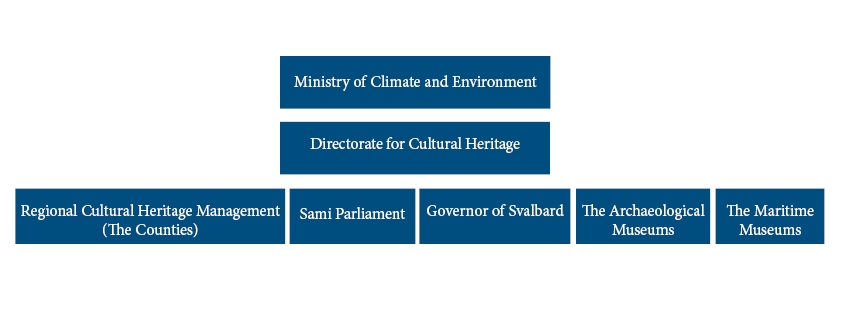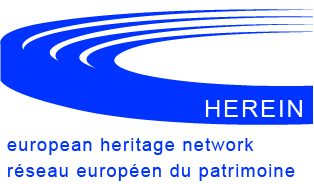 Norway
Norway
More detailed report: National Policy Report
Thesaurus: Thesaurus - Norwegian terms
Glossary: Terms in Norwegian
National coordinator: Vegard BERGGÅRD

 CULTURAL HERITAGE POLICY
CULTURAL HERITAGE POLICY
Norway’s national objectives are to protect a representative selection of cultural monuments, sites and environments, and to limit annual losses.
The national objectives for the management of the cultural heritage are established by the Norwegian Parliament. Some of the most important objectives are:
- By 2020, each municipality will have an overview of its cultural heritage as a basis for identifying a selection of monuments, sites and environments for conservation.
- By 2020, a standard of repair requiring only normal maintenance will be achieved for protected buildings, other structures and vessels and for a selection of archaeological monuments and sites.
- By 2020, a representative selection of cultural monuments, sites and environments will be protected by individual protection orders.
Ten conservation programmes (for private owned protected buildings, Sami cultural remains, the mediaeval stave churches, Norwegian World Heritage, technical and industrial heritage, fire safety on wooden towns and environments, historic vessels, ruins, rock art and archaeological heritage) have been given high priority by the Ministry of Climate and Environment and the Directorate for Cultural Heritage to achieve the national objectives.
To limit annual losses and strengthen the management of cultural heritage, the Directorate has initiated a project to improve the ability to implement knowledge and fact based management at the municipal level. Important measures are improving records, human resource development and the digitization of management systems.
Norway in the World Heritage Committee
On 15 November 2017 Norway was elected to Unesco’s World Heritage Committee for a period of four years. The Ministry of Climate and Environment, the Directorate for Cultural Heritage and the Norwegian Environment Agency are representing Norway on the committee.
 INSTITUTIONAL FRAMEWORK
INSTITUTIONAL FRAMEWORK

The Directorate for Cultural Heritage is responsible for the management of all archaeological and architectural monuments and sites and cultural environments in Norway in accordance with relevant legislation. The Directorate comes under the environmental management umbrella, and answers to the Ministry of Climate and Environment.
Each Norwegian county has a duty to employ officers who are responsible for cultural heritage conservation in connection with the administration of cultural affairs generally. The tasks of this agency are to advise the county administration on questions of cultural conservation and to ensure that protected monuments and sites and cultural environments are taken into account in the planning processes at the county and municipality levels.
The county officers prepare Protection Orders for The Directorate for Cultural Heritage and may also issue Provisional Protection Orders in order to evaluate whether a building or other monuments which are threatened with demolition should be granted a Permanent Protection Order.
Sami cultural remains are found over a wide area – at least from Hedmark county in south Norway to Finnmark county in the north. The Sami Parliament has the same responsibility as the county administrations for monuments and sites defined as Sami. Sami cultural heritage monuments and sites prior to 1917 are automatically protected by law.
Cultural heritage conservation on the archipelago Svalbard in the Arctic is administered by the Norwegian Governor of Svalbard, in accordance with the cultural heritage regulations for Svalbard, under which all monuments and sites prior to 1946 are automatically protected.
The Archaeological Museums in Oslo, Stavanger, Bergen, Trondheim and Tromsø are licensed to carry out excavations and investigations of archaeological monuments and sites.
NIKU (the Norwegian Institute for Cultural Heritage Research) is licensed to carry out similar tasks regarding medieval remains.
The Maritime Museums in Oslo, Stavanger and Bergen, as well as the Museum of Natural History, Archaeology and Social History in Trondheim and the Tromsø University Museum are responsible for underwater monuments.
 LEGAL FRAMEWORK
LEGAL FRAMEWORK
The purpose of cultural heritage management is described in the Cultural Heritage Act, which lays down that it is a national responsibility to safeguard archaeological and architectural monuments and sites and cultural environments "as part of our cultural heritage and identity and as an element in the overall environment and resource management".
Under the terms of the Act, the Directorate for Cultural Heritage may impose a protection order on buildings, groups of buildings and cultural landscapes. There are two types of protection given to monuments and sites, depending on whether they date back to before 1537 (for buildings: before 1650). Monuments and sites prior to 1537/1650 are automatically protected, while those dating from 1537/1650 onwards require a protection order, which is granted on a case-to-case basis. Today, the conservation of cultural environments (an area where monuments and objects form part of an integrated whole) is of growing importance.
The Cultural Heritage Act also regulates the relations between the authorities and the owners of protected monuments and sites. However, only a fraction of the cultural heritage in Norway is protected in this way. There are a large number of buildings and other monuments and sites that are considered worthy of protection because of their qualities and their importance for the surrounding environment. There are other acts of legislation that can be invoked to protect these monuments and sites, notably the Building and Planning Act which ensures that cultural heritage considerations are taken into account in all planning processes (municipal level).
Both Svalbard and Jan Mayen in the Arctic have separate laws from the mainland Cultural Heritage Act. The Svalbard Environmental Act is fairly unique in that it combines both natural and cultural heritage regulations. Similarly for Jan Mayen, the Regulations for the Protection of Jan Mayen Nature Reserve include cultural heritage protection.
Relevant links:
 RATIFIED INTERNATIONAL CONVENTIONS
RATIFIED INTERNATIONAL CONVENTIONS
- UNESCO Convention for the Protection of Cultural Property in the Event of Armed Conflict (The Hague, 1954)
- UNESCO Convention on the Means of Prohibiting and Preventing the Illicit Import, Export and Transfer of Ownership of Cultural Property 1970
- UNESCO Convention concerning the Protection of the World Cultural and Natural Heritage 1972
- Council of Europe - Convention for the Protection of the Architectural Heritage of Europe (Granada 1985)
- Council of Europe - European Convention on the Protection of the Archaeological Heritage (Valetta 1992)
- UNIDROIT Convention on Stolen or Illegally Exported Cultural Objects (1995)
- Council of Europe - European Landscape Convention (Florence 2000)
- Council of Europe - Framework Convention on the Value of Cultural Heritage for Society (Faro 2005)
- Convention for the Safeguarding of the Intangible Cultural Heritage (Paris 2003)
- Convention on the Protection and Promotion of the Diversity of Cultural Expressions (Paris 2005)



